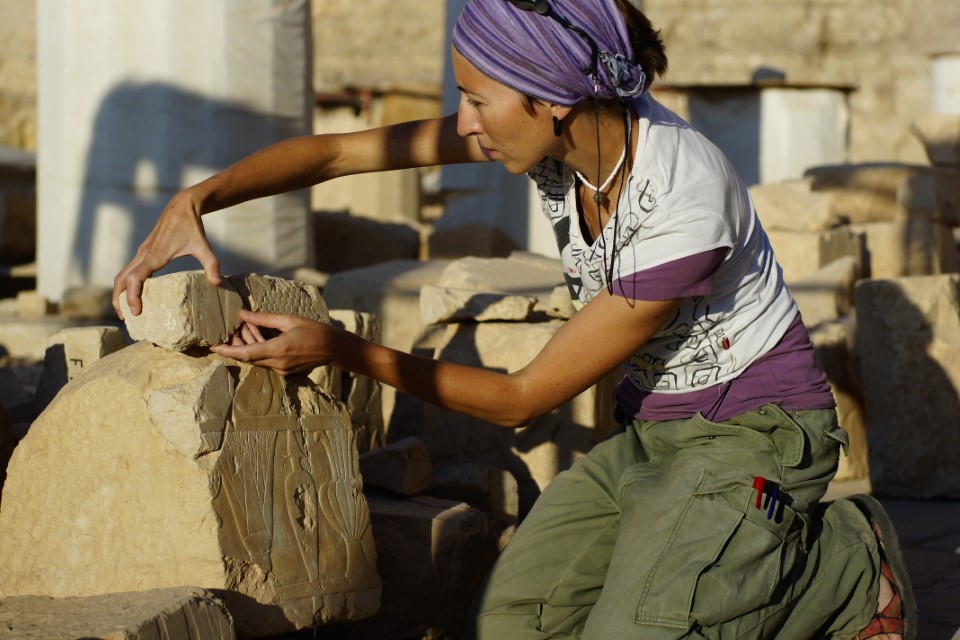Dr. Anastasiia Stupko-Lubczynska from the Polish Centre of Mediterranean Archaeology, University of Warsaw received the Antiquity Prize. She was recognized for her article on the organization of work of ancient Egyptian artists who carved the wall reliefs in the Chapel of Hatshepsut in Deir el-Bahari published in Antiquity in 2022.
Antiquity, a Cambridge Core journal published by Cambridge University Press, is among the leading archaeological periodicals in the world. Dr. Stupko-Lubczynska’s article was selected by the journal’s editorial advisory board, directors, and trustees from about 80 papers on all aspects of world archaeology published that year. In her work, through meticulous analysis of individual depictions, she demonstrated that artists adorning the temple of Egyptian female pharaoh, Hatshepsut were organized in workshops that relied on a master-apprentice relationship. „The analysis of the artists’ workshop organisation allows us to view the Chapel of Hatshepsut as a kind of the Sistine Chapel of the ancient world” – says Dr. Stupko-Lubczynska.
Dr. Stupko-Lubczynska is an associate professor in the Department of African Studies at the Polish Centre of Mediterranean Archaeology, University of Warsaw. She is heading the Polish Archaeological Expedition to North Asasif – The Asasif Project and is deputy director of the Polish-Egyptian Archaeological and Conservation Expedition at the Temple of Hatshepsut at Deir el-Bahari. Her research interests include the religious texts of ancient Egypt, architecture and decoration of Egyptian tombs, as well as ancient Egyptian artists.
The Antiquity Prize has been awarded annually since 1994 to honor and support the author(s) of the best contribution to Antiquity in the previous year. It was created under the premise that “research funding was becoming increasingly competitive, the time to write is difficult to find, and really good writing is ‘as rare and precious as ever’”.
All awarded articles can be read in Open Access. In the previous year, the Antiquity Prize was awarded to Ian Armit and David Reich.
Stupko-Lubczynska, A. (2022). Masters and apprentices at the Chapel of Hatshepsut: Towards an archaeology of ancient Egyptian reliefs. Antiquity, 96(385), 85-102. doi:10.15184/aqy.2021.103
Abstract: “Ancient art is typically studied in terms of its aesthetic or historical value. This article presents an alternative approach, examining ancient Egyptian wall reliefs from a chaîne opératoire perspective. The reliefs assessed here adorn the walls of the Chapel of Hatshepsut at Deir el-Bahari in Thebes. The analysis reveals, for the first time, the sequence of the artists’ work, from the initial preparation of the wall surface to the master sculptor’s final touches. This enables a reconstruction of the ergonomic organisation of the work, distinguishing the contributions of individual hands and revealing often intangible phenomena, such as master-apprentice interactions. A similar approach may be useful when examining carved reliefs in other parts of the world.”

